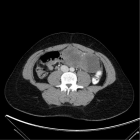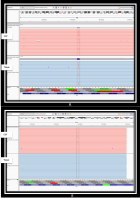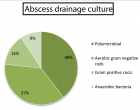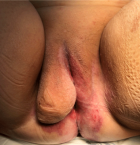Abstract
Research Article
Evaluation of novel culture media prepared from plant substrates for isolation and identification of Cryptococcus Neoformans Species Complex
Ellabib M*, Krema ZA, Mokthar ES, El Magrahi HS, Eshwika A and Cogliati M
Published: 14 August, 2018 | Volume 1 - Issue 1 | Pages: 009-013
Background: Melanin production due to phenoloxidase activity is a distinctive property of Cryptococcus neoformans and Cryptococcus gattii species complex yeasts. Therefore, an agar medium containing a precursor of melanin pigment is potentially useful to identify and differentiate cryptococcal colonies from other yeasts.
Background: This study aimed to evaluate and compare the ability of Cryptococcus neoformans species complex isolates to produce brown-pigmented colonies when grown on media prepared from various plant leaves or seeds extracts.
Material and Methods: Forty-six C. neoformans species complex isolates which were obtained from various environmental and clinical samples were inoculated on different media containing coriander, cumin, soybean, lupine, flax, pumpkin, basil, peppermint, and marjoram, were observed for the rate of growth and pigment production during a five-day period.
Results: All isolates were pigmented on all media within 24-48 hours, and brown or dark brown colonies were observed in less than five days, while C. albicans grew but did not produce any pigment.
Conclusion: The differential media tested in the present study are simple and inexpensive, and represent alternative valid tools for presumptive identification of C. neoformans species complex from clinical and environmental samples
Read Full Article HTML DOI: 10.29328/journal.ijcmbt.1001002 Cite this Article Read Full Article PDF
Keywords:
Cryptococcus neoformans; Melanin production; Differential medium; Seeds, Leaves
References
- Rajasingham R, Smith RM, Park BJ, Jarvis JN, Govender NP, et al. Global burden of disease of HIV-associated cryptococcal meningitis: an updated analysis. Lancet Infect Dis. 2017; 17: 873-881. Ref.: https://tinyurl.com/y9kkgk8e
- Heitman J, Kozel TR, Kwon-Chung KJ, Perfect JR, Casadevall A. Cryptococcus: From Human Pathogen to Model Yeast. ASM Press, Washington, DC, USA. 2011. Ref.: https://tinyurl.com/yd53oxge
- De Hoog GS, Guarro J, Gene J, Figueras MJ. Atlas of clinical fungi. ASM Press, Washington, DC, USA. 2000.
- Lacaz CS, Porto E, Martins JEC. Micologia media: fungos, actinomicetos ealgas de interesse medico. 8th ed. Sao Paulo: Sarvier. 1991.
- Chaskes S, Tyndall RL. Pigment production by Cryptococcus neoformans from para and ortho-diphenols: effect of the nitrogen source. J Clin Microbiol. 1975; 1: 509-514. Ref.: https://tinyurl.com/y8us93ja
- Pal M, Mehrotra BS. Studies on the efficacy of sunflower seed agar for the isolation and identification of Cryptococcus neoformans. Arogya J Health Sci 1982; 8: 74-79.
- Strachan AA, Yu RJ, Blank F. Pigment production of Cryptococcus neoformans grown with extracts of Guizotia abyssinica. Appl Microbiol. 1971; 22: 478-489.
- Hopfer RL, Blank F. Caffeic acid-containing medium for identification of Cryptococcus neoformans. J Clin Microbiol. 1976; 2: 115-120. Ref.: https://tinyurl.com/ycwcbdn4
- Nandhakumar B, Kumar G, Prabhu CP, Menon T. Mustard seed agar,a new medium for the differentiation of Cryptococccus neoformans. J. Clin. Microbiol. 2006; 44: 674. Ref.: https://tinyurl.com/y78ymenx
- Nandhakumar B, Menon T, Kumar G. A new henna-based medium for the differentiation of Cryptococcus neoformans. J Med Microbiol. 2007; 56: 568. Ref.: https://tinyurl.com/yba8zu4q
- Tendolkar U, Tainwala S, Jog S, Mathur M. Use of a new medium - tobacco agar, for pigment production of Cryptococcus neoformans. Indian J Med Microbiol. 2003; 21: 277-279. Ref.: https://tinyurl.com/ybtory4b
- Hamzia Ali Ajah. Two new media apple leaves agar and eggplant leaves agar for identification of Cryptococcus neoformans. J Biology, Agriculture and Healthcare. 2014; 4. Ref.: https://tinyurl.com/y7al3pva
- Ellabib MS, Krema ZA, Allafi AA, Cogliati M. First report of two cases of cryptococcosis in Tripoli, Libya, infected with Cryptococcus neoformans isolates present in the urban area. J Mycol Med. 2017; 27: 421-424. Ref.: https://tinyurl.com/ycwn9gb4
- Ellabib MS, Aboshkiwa MA, Husien WM, D'Amicis R, Cogliati M. Isolation, identification and molecular typing of Cryptococcus neoformans from pigeon droppings and other environmental sources in Tripoli, Libya. Mycopathologia. 2016; 181: 603-608. Ref.: https://tinyurl.com/ycbvydzl
- Springer DJ, Mohan R, Heitman J. Plants promote mating and dispersal of the human pathogenic fungus Cryptococcus. PLoS One. 2017; 12: e0171695. Ref.: https://tinyurl.com/y8sr4ctv
- Rajeshwari CU, Andallu B. Reverse phase HPLC for the detection of flavonoids in the ethanolic extract of Coriandrum sativum L seeds. International Journal of Basic and Applied Sciences. 2012; 1: 21-26.
- Claudia-CT, Neli-Kinga O, Laurian V, Cristina M. Comparative Studies on Polyphenolic Composition, Antioxidant and Diuretic Effects of Nigella sativa L. (Black Cumin) and Nigella damascena L. (Lady-in-a-Mist) Seeds. Molecules. 2015; 20: 9560-9574. Ref.: https://tinyurl.com/y88sgcq9
- Montserrat D, Teresa H, Sergio R, Grzegorz L, Isabel E, et al. Bioactive Phenolic Compounds of Soybean (Glycine max cv. Merit): Modifications by Different Microbiological Fermentations. Pol J Food Nutr Sci. 2012; 62: 241-250. Ref.: https://tinyurl.com/ya8azlua
- Aleksander S, Jaroslaw C, Piotr K, Krzysztof D, Eleonora LS, et al . Antioxidant activity and phenolic content in three lupin species. Journal of Food Composition and Analysis. 2012; 25: 190-197. Ref.: https://tinyurl.com/y7fvumzg
Figures:
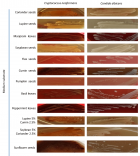
Figure 1

Figure 2
Similar Articles
-
Evaluation of novel culture media prepared from plant substrates for isolation and identification of Cryptococcus Neoformans Species ComplexEllabib M*,Krema ZA,Mokthar ES,El Magrahi HS,Eshwika A,Cogliati M. Evaluation of novel culture media prepared from plant substrates for isolation and identification of Cryptococcus Neoformans Species Complex. . 2018 doi: 10.29328/journal.ijcmbt.1001002; 1: 009-013
Recently Viewed
-
Metabolic syndrome: A case reportDragan Klaric,Marta Martinis*,Marta Klaric. Metabolic syndrome: A case report. Ann Clin Endocrinol Metabol. 2021: doi: 10.29328/journal.acem.1001022; 5: 031-035
-
Hypercalcaemic Crisis Associated with Hyperthyroidism: A Rare and Challenging PresentationKarthik Baburaj*, Priya Thottiyil Nair, Abeed Hussain, Vimal MV. Hypercalcaemic Crisis Associated with Hyperthyroidism: A Rare and Challenging Presentation. Ann Clin Endocrinol Metabol. 2024: doi: 10.29328/journal.acem.1001029; 8: 001-003
-
Evaluation of novel culture media prepared from plant substrates for isolation and identification of Cryptococcus Neoformans Species ComplexEllabib M*,Krema ZA,Mokthar ES,El Magrahi HS,Eshwika A,Cogliati M. Evaluation of novel culture media prepared from plant substrates for isolation and identification of Cryptococcus Neoformans Species Complex. Int J Clin Microbiol Biochem Technol. 2018: doi: 10.29328/journal.ijcmbt.1001002; 1: 009-013
-
A Review on filaricidal activity of phytochemical extracts against filariasis and the Parasites Genomic DiversityAM Gumel*,MM Dogara. A Review on filaricidal activity of phytochemical extracts against filariasis and the Parasites Genomic Diversity. Int J Clin Microbiol Biochem Technol. 2018: doi: 10.29328/journal.ijcmbt.1001004; 1: 024-032
-
Trends of Antibiotic Resistance among Uropathogens in Medical vs. Non-Medical Departments of Al-Shifa Medical Complex in Gaza Strip: A Retrospective, Cross-Sectional StudyKhaled Alkhodari*, Yasmin Al-Shurafa, Hammam AL-louh, Rafat Lubbad. Trends of Antibiotic Resistance among Uropathogens in Medical vs. Non-Medical Departments of Al-Shifa Medical Complex in Gaza Strip: A Retrospective, Cross-Sectional Study. Int J Clin Microbiol Biochem Technol. 2024: doi: 10.29328/journal.ijcmbt.1001028; 7: 001-005
Most Viewed
-
Impact of Latex Sensitization on Asthma and Rhinitis Progression: A Study at Abidjan-Cocody University Hospital - Côte d’Ivoire (Progression of Asthma and Rhinitis related to Latex Sensitization)Dasse Sery Romuald*, KL Siransy, N Koffi, RO Yeboah, EK Nguessan, HA Adou, VP Goran-Kouacou, AU Assi, JY Seri, S Moussa, D Oura, CL Memel, H Koya, E Atoukoula. Impact of Latex Sensitization on Asthma and Rhinitis Progression: A Study at Abidjan-Cocody University Hospital - Côte d’Ivoire (Progression of Asthma and Rhinitis related to Latex Sensitization). Arch Asthma Allergy Immunol. 2024 doi: 10.29328/journal.aaai.1001035; 8: 007-012
-
Causal Link between Human Blood Metabolites and Asthma: An Investigation Using Mendelian RandomizationYong-Qing Zhu, Xiao-Yan Meng, Jing-Hua Yang*. Causal Link between Human Blood Metabolites and Asthma: An Investigation Using Mendelian Randomization. Arch Asthma Allergy Immunol. 2023 doi: 10.29328/journal.aaai.1001032; 7: 012-022
-
An algorithm to safely manage oral food challenge in an office-based setting for children with multiple food allergiesNathalie Cottel,Aïcha Dieme,Véronique Orcel,Yannick Chantran,Mélisande Bourgoin-Heck,Jocelyne Just. An algorithm to safely manage oral food challenge in an office-based setting for children with multiple food allergies. Arch Asthma Allergy Immunol. 2021 doi: 10.29328/journal.aaai.1001027; 5: 030-037
-
Snow white: an allergic girl?Oreste Vittore Brenna*. Snow white: an allergic girl?. Arch Asthma Allergy Immunol. 2022 doi: 10.29328/journal.aaai.1001029; 6: 001-002
-
Cytokine intoxication as a model of cell apoptosis and predict of schizophrenia - like affective disordersElena Viktorovna Drozdova*. Cytokine intoxication as a model of cell apoptosis and predict of schizophrenia - like affective disorders. Arch Asthma Allergy Immunol. 2021 doi: 10.29328/journal.aaai.1001028; 5: 038-040

If you are already a member of our network and need to keep track of any developments regarding a question you have already submitted, click "take me to my Query."







